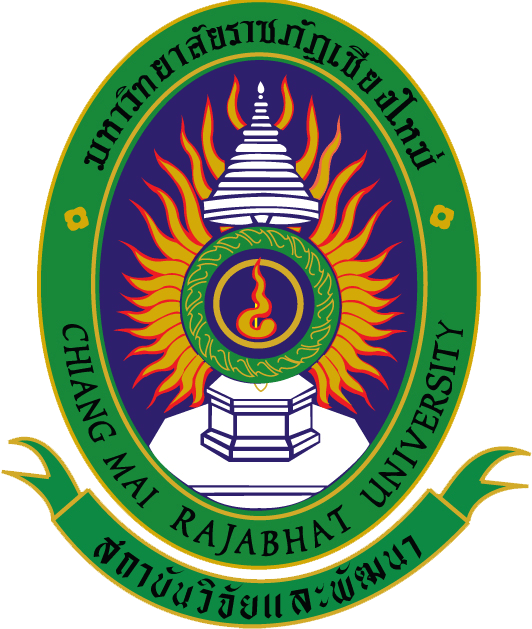
ระบบสารสนเทศงานวิจัย สถาบันวิจัยและพัฒนา มหาวิทยาลัยราชภัฏเชียงใหม่
Research Information System(RIS)
การพัฒนารูปแบบการเรียนการสอนโดย บูรณาการแนวคิดการเรียนรู้ที่เน้นกิจกรรมเพื่อส่งเสริมหารเป็นผู้สร้างสรรค์นวัตกรรมในวิชาภาษาไทย สาขาวิชาการประถมศึกษา
อาจารย์คะเณยะ อ่อนนาง
คณะครุศาสตร์
คำสำคัญ :
เลขทะเบียน :
1277-63-EDU-CMRU
บทคัดย่อ
งานวิจัยนี้มีวัตถุประสงค์เพื่อ (1) เพื่อพัฒนารูปแบบการเรียนการสอนโดยบูรณาการแนวคิด การเรียนรู้ที่เน้นกิจกรรมเพื่อส่งเสริมการเป็นผู้สร้างสรรค์นวัตกรรมในวิชาภาษาไทย (2) เพื่อศึกษา ผลการใช้รูปแบบการเรียนการสอนโดยบูรณาการกับแนวคิดการเรียนรู้ที่เน้นกิจกรรมเพื่อส่งเสริมการเป็นผู้สร้างสรรค์นวัตกรรมในวิชาภาษาไทย และ (3) เพื่อศึกษาความพึงพอใจของนักศึกษาที่มีต่อรูปแบบ การเรียนการสอนโดยบูรณาการกับแนวคิดการเรียนรู้ที่เน้นกิจกรรมเพื่อส่งเสริมการเป็นผู้สร้างสรรค์นวัตกรรมในวิชาภาษาไทย การวิจัยนี้ดำเนินการตามระเบียบวิธีวิจัยและพัฒนา ประชากรที่ใช้ใน การประเมินรูปแบบ คือผู้ทรงคุณวุฒิ จำนวน 3 ท่าน ตัวอย่างที่ใช้ในการทดลองใช้รูปแบบ คือ นักศึกษาสาขาวิชาการประถมศึกษา ชั้นปีที่ 2 คณะครุศาสตร์ มหาวิทยาลัยราชภัฏเชียงใหม่ ที่ลงทะเบียนเรียนในรายวิชาหลักสูตรและการจัดการเรียนรู้ภาษาไทยในระดับประถมศึกษา ภาคเรียนที่ 2 ปีการศึกษา 2563 จำนวน 32 คน ได้ตัวอย่างมาโดยการสุ่มแบบแบ่งกลุ่ม เครื่องมือที่ใช้ในการวิจัย ประกอบด้วย (1) แบบประเมินรูปแบบการเรียนการสอน (2) แบบทดสอบความรู้ในเนื้อหาสาระภาษาไทย (3) แบบประเมินความสามารถในการสร้างสรรค์ผลงาน (4) แบบวัดเจตคติที่มีต่อการใช้รูปแบบการเรียนการสอน และ (5) แบบวัดความพึงพอใจที่มีต่อการใช้รูปแบบการเรียนการสอน สถิติที่ใช้ในวิเคราะห์ข้อมูล คือ ค่าเฉลี่ย ค่าส่วนเบี่ยงเบนมาตรฐาน และการทดสอบค่าที ผลการวิจัยพบว่า 1. ได้รูปแบบการเรียนการสอนโดยบูรณาการแนวคิดการเรียนรู้ที่เน้นกิจกรรมเพื่อส่งเสริมการเป็นผู้สร้างสรรค์นวัตกรรมในวิชาภาษาไทย ที่มีองค์ประกอบ 6 องค์ประกอบ ได้แก่ (1) หลักการ (2) วัตถุประสงค์ (3) ขั้นตอนการจัดกิจกรรมการเรียนรู้มี 5 ขั้นตอน คือ ขั้นรับรู้ประสบการณ์ ขั้นกำหนดเป้าหมาย ขั้นสร้างนวัตกรรม ขั้นนำนวัตกรรมไปใช้และ ขั้นสะท้อนคิดถอดบทเรียน (4) สื่อและแหล่งเรียนรู้ที่สนับสนุนการใช้รูปแบบ (5) บทบาทผู้เรียนและผู้สอน (6) การวัดและประเมินผล โดยมีผลการประเมินความเหมาะสม อยู่ในระดับมากที่สุด 2. ผลการใช้รูปแบบการเรียนการสอนโดยบูรณาการแนวคิดการเรียนรู้ที่เน้นกิจกรรมเพื่อส่งเสริมการเป็นผู้สร้างสรรค์นวัตกรรมในวิชาภาษาไทย พบว่า 2.1 ระดับคะแนนความรู้ในเนื้อหาสาระ หลังทดลองสูงกว่าก่อนทดลอง อย่างมีนัยสำคัญทางสถิติที่ระดับ .05 2.2 ระดับความสามารถในการสร้างสรรค์ผลงานหลังทดลองสูงกว่าก่อนการทดลองอย่างมีนัยสำคัญทางสถิติที่ระดับ .05 2.3 หลังการทดลองนักศึกษามีเจตคติที่ดีต่อรูปแบบการเรียนการสอน 3. นักศึกษามีความพึงพอใจต่อรูปแบบการเรียนการสอนอยู่ในระดับมากที่สุด
Abstract
The objectives of this research were (1) to develop the model of instruction by the integration of the activity-based learning concepts to enhance the innovation capability in Thai language subject, (2) to study the results of using the model of instruction by the integration of the activity-based learning concepts to enhance the innovation capability in Thai language subject and (3) to study the student's satisfaction of using the model of instruction by the integration of the activity-based learning concepts to enhance the innovation capability in Thai language subject. This research was conducted according to the research and development methodology, as measured by three experts. The sample used in the research was 32 students in the field of elementary education, Faculty of Education, Chiang Mai Rajabhat University who enrolled in the curriculum and learning management of Thai language for elementary education in the first semester of the academic year 2020. Samples were obtained by cluster random sampling. The research instruments were: (1) an instructional model assessment, (2) a Thai language test, (3) an ability assessment of creating innovation, (4) an attitude assessment on the use of the instructional model, and (5) a satisfaction assessment of the use of the instructional model. The statistics used in the research were Arithmetic Mean, Standard Deviation and T - Test. The results of the study were as follows: 1. The model of instruction by the integration of the activity-based learning concepts to enhance the innovation capability in Thai language subject consisted of six aspects : (1) principles, (2) objectives, (3) instructional processes (with five stages : Experiential perception, Goal setting, Creating innovation, Innovation implementation, and reflection on concept), (4) media and learning resources supported the instructional model, (5) the role of teachers and learners, (6) evaluation with the highest level. 2. The findings of using the instructional model by the integration of the activity-based learning concepts to enhance the innovation capability in Thai language subject revealed that (1) after learning with the instructional model, the experimental group had an average post test scores of Thai language higher than their pre-test scores, at the .05 level of significant, (2) after learning with the instructional model, the experimental group also had the innovation capability higher than before learning with the instructional model, at the .05 level of significant, (3) the students had a good attitude towards the instructional model 3. The students were satisfied with the instructional model at the highest level.
ไฟล์งานวิจัย
2.บทคัดย่อ สมบูรณ์ - ลายน้ำ.pdf
3. กิตติกรรมประกาศ - ลายน้ำ.pdf
17. ประวัติผู้วิจัย - ลายน้ำ.pdf
ข้อมูลการตีพิมพ์
ชื่อบทความ :
แหล่งที่ตีพิมพ์ :วารสาร มจร สังคมศาสตร์ปริทรรศน์ ปีที่ 13 ฉบับที่่ 5 ประจำเดือนกันยายน - ตุลาคม 2567
ปีที่ตีพิมพ์ :2567
51 11 มี.ค. 2563
กองทุนวิจัย มหาวิทยาลัยราชภัฏเชียงใหม่
202 ถ.ช้างเผือก ต.ช้างเผือก อ.เมือง จ.เชียงใหม่ 503000
053-88-5555